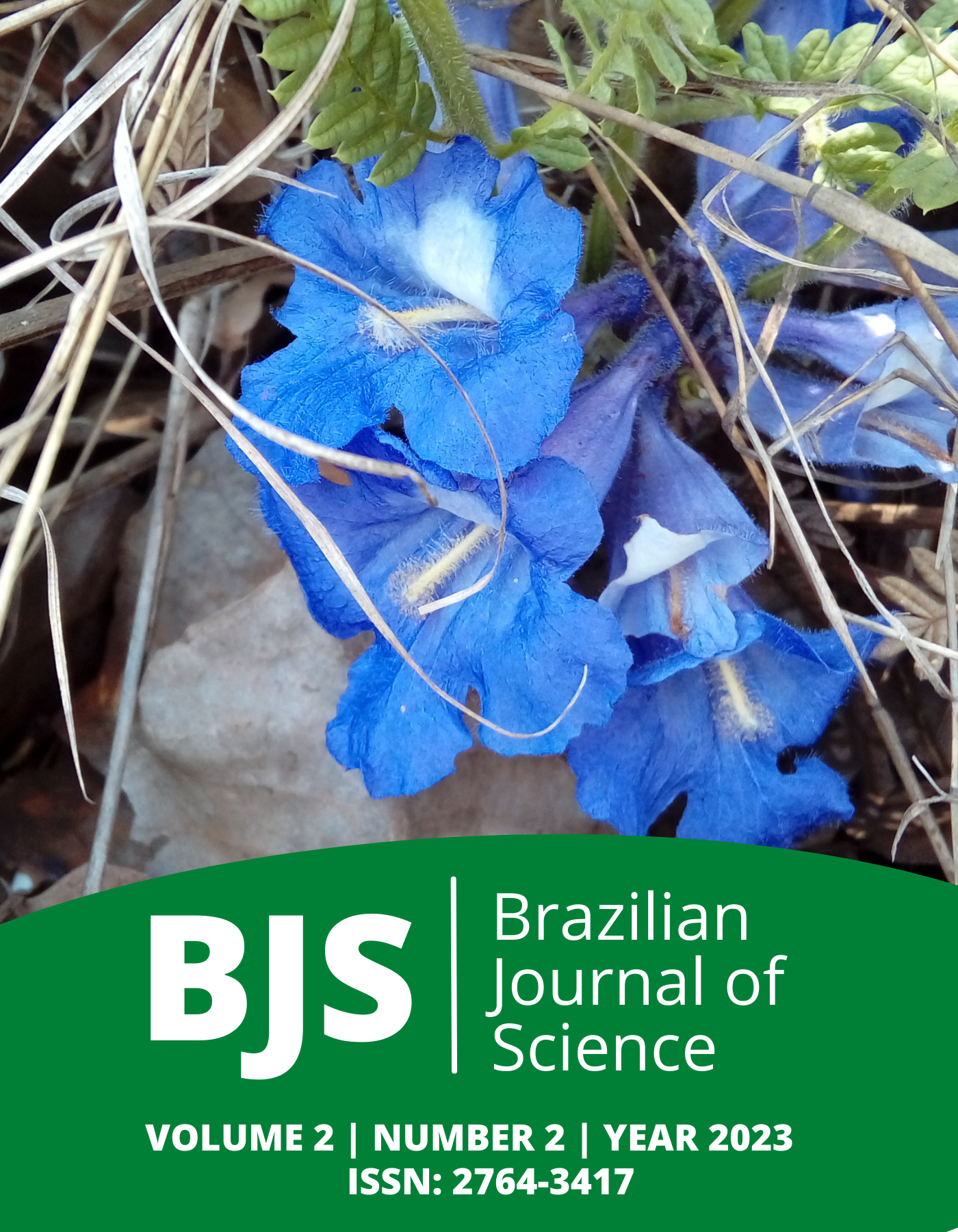Obtaining chitosan from fishing residues and its potentiometric titration
DOI:
https://doi.org/10.14295/bjs.v2i2.240Keywords:
chitin, chitosana, quality, fishAbstract
Chitin is the most abundant natural biopolymer followed by cellulose and is present in a large number of living organisms, such as fungi, insects and crustaceans, from which chitosan is obtained and its application to different areas of medicine has currently been demonstrated. pharmacology, cosmetics, agriculture, industry, etc. The quality of this compound is important due to the applications that it potentially presents, deacetylation or potentiometric titration, is one of the main parameters that determines said property, likewise, it allows the final obtaining of chitin, therefore, the objective of This work was to obtain chitin and chitosan from three different samples of crustacean exoskeletons from a fishing field with high productivity and environmental contamination. The results obtained indicate a degree of deacetylation greater than 70%, with a variable relative humidity between the samples (0.96, 0.089 and 0.47%) and ashes (18.86, 0.0484 and 29.19%), while a percentage of inorganic matter of the 12-16%. This means that the quality of the product that was obtained is considered acceptable and that the variations between the samples may be related to some factors such as food and origin of the raw material.
References
Barra, A., Romero, A., & Beltramino, J. (2012). Obtención de quitosano. Sitio Argentino de Producción Animal. 1-10. Disponible en https://www.produccion-animal.com.ar/produccion_peces/piscicultura/173-Quitosano.pdf
Barraza, T. O. (2021). Evaluación del efecto de bioestimulantes naturales producidos localmente sobre el desarrollo vegetativo y reproductivo de rábano (Raphanus sativus) y pepino (Cucumis sativus). Tesis de pregrado, Universidad Politécnica del Valle del Évora, Sinaloa, México. 80 p.
Castro, M. N., & Vidal, C. C. (2015) Obtención y caracterización de quitina y quitosano del Emerita analoga a escala piloto. Tzhoecoen, 7(2), 182-197. https://revistas.uss.edu.pe/index.php/tzh/article/view/280/286
Conapesca. (2017). Comisión Nacional de Pesca y Acuacultura. ¿Cuál es la importancia de la sustentabilidad pesquera? [Internet]. [Fecha de consulta: 12 de agosto del 2022]. Disponible en: https://www.gob.mx/conapesca/articulos/cual-es-la-importancia-de-la-sustentabilidad-pesquera-131514?idiom=es
Chaussard, G., & Domard, A. (2004). New aspects of the extraction of chitin from squid pens. Biomacromolecules, 5(2), 559-564. http://dx.doi.org/10.1021/bm034401t DOI: https://doi.org/10.1021/bm034401t
Dima, J. B., Sequeiros, C., & Zaritzky, N. E. (2013). Optimización de la obtención de quitosano de crustáceos patagónicos (Puerto Madryn, Chubut): Desarrollo de micropartículas y evaluación de su acción bactericida en patógenos de usual frecuencia en maricultura. Asociación Argentina de Ingeniería Química. (AAIQ). 1-19. Disponible en: http://www.aaiq.org.ar/SCongresos/docs/04_025/papers/09f/09f_1422_054.pdf
Gañán, P., Zuluaga, R., Castro, C., Restrepo, A., Velásquez, J., Osorio, M., Montoya, U., Vélez, L., Álvarez, C., Correa, C., & Molina, C. (2017). Celulosa: un polímero de siempre con mucho futuro. Revista Colombiana de Materiales, 01-04. https://revistas.udea.edu.co/index.php/materiales/article/view/328779
Hernández, H., Águila, O., Agustin, E., Viveros, E., & Ramos, C. (2009). Obtención y caracterización de quitosano a partir de exoesqueletos de camarón. Sociedad Mexicana de Ciencia y Tecnología de Superficies y Materiales, 22(3), 57-60. http://www.scielo.org.mx/pdf/sv/v22n3/v22n3a12.pdf
Hidalgo, C., Fernández, M., Nieto, O., Paneque, A., Fernández, G., & Llópiz, J. (2009). Estudio de quitosanos cubanos derivados de la quitina de la langosta. Revista Iberoamericana de Polímero, 10(1). https://reviberpol.files.wordpress.com/2019/07/2009-hidalgo.pdf
Inegi (2020). Instituto Nacional de Estadística y Geografía. Panorama sociodemográfico de Sinaloa, 2020. [Internet]. [Fecha de consulta: 18 de noviembre del 2022]. Disponible en: https://www.inegi.org.mx/contenidos/productos/prod_serv/contenidos/espanol/bvinegi/productos/nueva_estruc/7
Molina-Zerpa, J., Colina-Rincón, M., Rincón, D., & Vargas-Colina, J. (2017). Efecto del uso de quitosano en el mejoramiento del cultivo del arroz (Oryza sativa L. variedad sd20a). Revista de Investigación Agraria y Ambiental, 8(2), 151-165. https://dialnet.unirioja.es/servlet/articulo?codigo=6535143 DOI: https://doi.org/10.22490/21456453.2041
Percot, A., Viton, C., & Domard, A. (2003). Optimization of chitin extraction from shrimp shells. Biomacromolecules, 4(1), 12-18. http://dx.doi.org/10.1021/bm025602k DOI: https://doi.org/10.1021/bm025602k
Toppe, J., Olsen, R. L., Peñarubia, O. R., & James, D. G. (2018). Producción y utilización del ensilado de pescado. Manual sobre cómo convertir los desperdicios del pescado en ganancias y en un ingrediente valioso de la ración o como fertilizante. Rome, FAO. 28 pp. Disponible en: https://www.fao.org/fileadmin/user_upload/rebyc-2015/documents/Espanol.pdf
Sader. (2018). Secretaría de Agricultura y Desarrollo Rural. Nada se tira todo se aprovecha: residuos pesqueros. [Internet]. [Fecha de consulta: 28 de octubre del 2022]. Disponible en: https://www.gob.mx/agricultura/es/articulos/nada-se-tira-todo-se-aprovecha-residuos-pesqueros
Sader. (2016). Secretaría de Agricultura y Desarrollo Rural. Residuos pesqueros residuos aprovechables. [Internet]. [Fecha de consulta: 28 de octubre del 2022]. Disponible en: https://www.gob.mx/agricultura/es/articulos/residuos-pesqueros-recursos-aprovechables
Velasco, J., Díaz, G., Ramírez, R., & Pérez, L. (2019). Producción de quitosano a partir de desechos de camarón generados del procesamiento industrial. Investigación y Desarrollo en Ciencia y Tecnología de Alimentos, 4(1), 897-901. http://www.fcb.uanl.mx/IDCyTA/files/volume4/4/10/127.pdf
Vázquez, G. E. (2001). Cuantificación y efectos de la producción de lixiviados en el relleno sanitario de Salinas Victoria, N. L., Tesis de Grado, Universidad Autónoma de Nuevo Léon. Disponible en: http://eprints.uanl.mx/6324/1/1080095002.PDF
Younes, I., & Rinaudo, M. (2015). Chitin and chitosan preparation from marine sources. structure, properties and applications. Marines Drugs, 13(3), 1133-1174. https://doi.org/10.3390/md13031133 DOI: https://doi.org/10.3390/md13031133
Downloads
Published
How to Cite
Issue
Section
License
Copyright (c) 2022 Sarahi Ovalle Torres, Oscar Barraza Torres, Esteban Peña Peña

This work is licensed under a Creative Commons Attribution 4.0 International License.
Authors who publish with this journal agree to the following terms:
1) Authors retain copyright and grant the journal right of first publication with the work simultaneously licensed under a Creative Commons Attribution License that allows others to share the work with an acknowledgement of the work's authorship and initial publication in this journal.
2) Authors are able to enter into separate, additional contractual arrangements for the non-exclusive distribution of the journal's published version of the work (e.g., post it to an institutional repository or publish it in a book), with an acknowledgement of its initial publication in this journal.
3) Authors are permitted and encouraged to post their work online (e.g., in institutional repositories or on their website) prior to and during the submission process, as it can lead to productive exchanges, as well as earlier and greater citation of published work.




